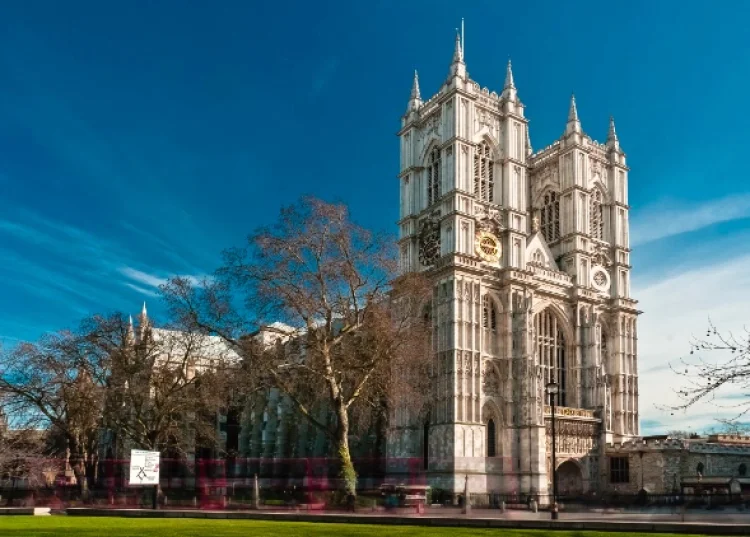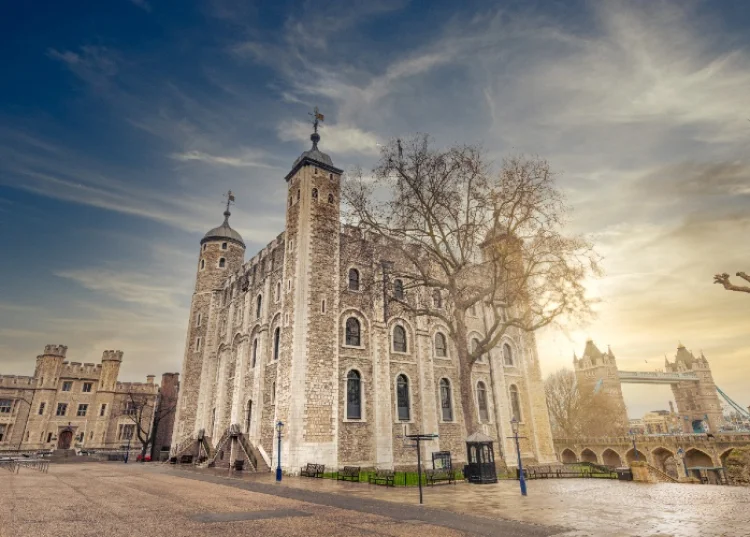Want to walk in the footsteps of King Henry VIII and visit sites that relate to the life of this iconic monarch? There’s a host of top Henry VIII sites to visit including Hampton Court Palace, Eltham Palace and Banqueting House.
We’ve put together a guide to Henry VIII’s historical places, with our top ten places to visit.

1. Hampton Court Palace
Hampton Court Palace was once the home of King Henry VIII, who spent much of his time here. Today you can still see much of the original palace, including Henry’s apartments and even his private tennis courts.
Hampton Court Palace was then the site where some major events in Henry’s life took place: the break with Rome, the birth of his heir, Edward VI, divorce of Anne of Cleves, and the accusation of adultery and subsequent detention of Catherine Howard.
Today, Hampton Court Palace is a popular tourist attraction, with visitors able to tour Henry VIII’s apartments and the Tudor kitchens as well as its famous maze.
Amongst its many attractions, Hampton Court is home to a set of medieval “tenys playe” or tennis courts. These courts, then often used by a young Henry VIII and now England’s oldest existing “real” courts can still be seen there today. In fact, they are still actively used.

2. Eltham Palace
The original Tudor Great Hall (originally built for the Yorkist king Edward IV in the 1470s), is now the only part of medieval Eltham Palace that still exists, after its eventual decline in the 17th century, and is flanked by the 1930s Art-Deco grand house.
Henry spent much of his childhood at the medieval Eltham Palace. Whilst king, Henry VIII and Anne Boleyn also visited Eltham many times, including in 1532 as they prepared to journey to Calais to receive Francis I’s support of their marriage and Henry VIII’s break with Rome.

3. Banqueting House
The Banqueting House in London is the only surviving building of the eminent 16th century royal Palace of Whitehall, home to some of Britain’s most infamous monarchs.
The Palace of Whitehall first came into the possession of the Crown in 1530, when its previous owner Cardinal Wolsey was removed from power. Henry VIII took the Palace for himself, installing it as the key royal residence for the Tudor – and later Stuart – court.
On 30 January 1649 the balcony of the Banqueting House became the location for the beheading of King Charles I. In 1698, a huge fire burned Whitehall Palace to the ground. Sir Christopher Wren was commissioned to convert the Banqueting House into a chapel to replace the one destroyed in the fire.
Visitors can tour Banqueting House – an entry ticket includes an audio guide.

4. St James’s Palace
St James’s Palace was the official residence of Kings and Queens of England for over 300 years, from King Henry VIII up until the reign of Queen Victoria, when this role was taken over by Buckingham Palace.
The redbrick Tudor structure of St James’s Palace was built by King Henry VIII from 1531-1536 on the former site of the Hospital of St James. The Palace was intended to be used by Henry VIII as a residence to ‘escape formal court life’, and you can still see the initials ‘H.A.’ (for Henry and his second wife Anne) on a couple of the Tudor fireplaces in the state apartments.
Despite much of the palace being destroyed by fire in 1809 (with a majority of the original palace being remodelled during the 19th century) much of the original Tudor work remains today.
Today St James’s Palace is closed to the public, but you can still visit the Chapel Royal. Visitors can also view the Household Cavalry guards inspection at St James’s Palace, and the Changing of the Guard also departs from the Palace everyday.

5. Westminster Abbey
Henry VIII’s coronation took place at Westminster Abbey on the 24 June 1509 – later, he also dissolved its monastery but spared the Abbey.
The Abbey is an iconic medieval structure and the site of many historic royal and national events, from coronations and weddings to burials and even deaths.
Over 3,000 people are buried at Westminster Abbey. There are 600 tombs and monuments to see, many of them Royal and open to visitors. Some of the most famous royals buried there are Mary Queen of Scots, Elizabeth I and Henry III. The tomb of the Unknown Soldier is in the Abbey and there is a service each Remembrance Sunday.
Funeral services for important figures and royalty are also held in the Abbey and over time prominent funerals at the Abbey have included those of Winston Churchill, George VI, Princess Diana and Queen Elizabeth I.
In addition to the numerous burial sites and architectural features, one of the most impressive sites at Westminster Abbey is the Coronation Chair, produced in 1300-1301 under the orders of King Edward I. Its purpose was to accommodate the Stone of Scone, which the king had brought from Scotland. To have an informed visit and to see the most interesting parts of Westminster Abbey, take a tour, as just wandering around can be overwhelming.

6. Hatfield House
Hatfield House has been a country estate for centuries. Built in approximately 1485, Hatfield Palace was bought by Henry VIII and became the home of his children, particularly that of a young Elizabeth I. In the gardens of Hatfield House, one can visit the oak tree where Elizabeth is said to have been informed of her ascension to the throne.
Today, little is left of the original Hatfield Palace, which was torn down in the 17th century to make way for a more modern structure.

7. Windsor Castle
Windsor Castle is the oldest and largest occupied castle in the world – home to over 900 years of royal history, and the burial place of Henry VIII and Jane Seymour.
Covering an area of approximately 13 acres, it contains a wide range of interesting features. These include the State Apartments, Queen Mary’s dolls house and the beautiful St George’s Chapel. Windsor Castle remains a favourite home of Queen Elizabeth, and she spends most of her weekends there.
There are numerous exhibitions and tours at Windsor Castle – a typical visit can take up to three hours.

8. Portsmouth Historic Dockyard
Portsmouth Historic Dockyard is an area of HM Naval Base Portsmouth which is open to the public. Managed today by the National Museum of the Royal Navy, the dockyard contains several historic and famous ships including HMS Victory, HMS Warrior and the Mary Rose.
The Mary Rose is a 16th century warship favoured by King Henry VIII. It sunk in 1545 and was famously recovered in 1982, with The Mary Rose Museum now housing finds from the wreckage.

9. The Tower of London
The Tower of London is a famous fortress and prison. Anne Boleyn, Henry VIII’s second wife, was executed here 1536, as Henry was off wooing his next wife, Jane Seymour. First commissioned by the first Norman king, William the Conqueror, it was designed as a fortress-stronghold, a role that remained unchanged right up until the late 19th century.
The Tower of London was also used as a residence for monarchs of England, and it was traditionally used by monarchs in the run up to their coronation. However the Tower is most famous for its use as a prison.
Only seven people were executed within the Tower’s walls – including Anne Boleyn – but the list of people who at one time or another were imprisoned in the Tower of London reads like a who’s who of 1,000 years of Britain’s history. The spot near to the scaffold where Anne Boleyn was executed is marked with a memorial, and she is buried in the nearby church of St Peter ad Vincula which may also be explored.
There is a great deal to see and do at the Tower: the beefeaters, ravens, site of the menagerie and just walking around it to soak up the history. Allow plenty of time for your visit.

10. Leeds Castle
Leeds Castle in Kent was a 12th century royal palace, prison and stately home. Henry VIII visited it on several occasions and extensively renovated the castle as a residence for his first wife, Catherine of Aragon.
Today, Leeds Castle is a major leisure destination and houses a maze, a golf course, and what may be the world’s only dog collar museum. The castle also draws visitors from far and wide to explore its beautiful structure, positioned picturesquely on an island in the middle of a lake.

